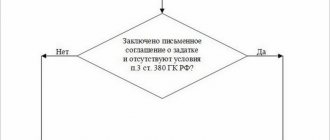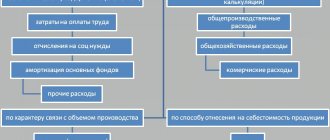Acquiring services are used by businessmen who accept payments by plastic cards. Acquiring transactions differ from cash payments: payment from the buyer does not arrive at the seller’s cash desk immediately and is subject to a commission. Therefore, tax and accounting accounting for acquiring raises questions. We will answer them.
Acquiring and its types
Acquiring accounting
- The proceeds are credited to the account on the day of payment
- Revenue is credited to the account later
- When to recognize revenue
Accounting for the return of goods paid for using acquiring
Tax accounting of acquiring
Acquiring documents
Acquiring and its types
Acquiring is a banking service that allows businessmen to receive revenue from payment cards. If the card is linked to a smartphone or smart watch with an NFC module, then the buyer can pay from the gadget, and they can also make the payment via the Internet - all this is also acquiring.
There are several types of acquiring:
1. Merchant - the buyer purchases a product or receives a service and pays with a card through a terminal located at the retail outlet.
2. Mobile - similar to a trading one, but the terminal is not installed permanently. It is carried by the courier delivering the goods or the driver of the vehicle. To communicate with the bank, the terminal is connected to a mobile phone or tablet.
3. Internet acquiring - an option for purchases in online stores and remote purchase of services (for example, air tickets). In this case, the card does not interact directly with the terminal. The buyer selects the desired product or service, and then enters his card details and PIN code in a special section on the website
Acquiring differs in the time at which money is credited to the seller’s current account.
1. Deferred enrollment. This option is used most often. It is inconvenient for a credit institution to process many small transactions at the time of their completion. Therefore, banks usually include in contracts provisions for the reimbursement of funds for acquiring transactions in 1-3 business days.
2. Enrollment “day to day”. Some banks, in order to attract customers, offer them crediting money to their account on the day the buyer pays. This option is often used by credit institutions that specialize in working with small businesses. This is convenient when receiving trading revenue on weekends or during long holidays
The peculiarity of acquiring is that the receipt of money from the buyer to the seller’s account does not occur instantly, but after 1–3 business days. There is also a commission for the provision of acquiring services, which the bank withholds from each transaction. These are the main features that affect accounting and tax accounting.
What types of payment for acquiring are there?
Based on the payment method, the following types of acquiring are distinguished:
- Trade acquiring is the most common type of service. It involves the use of a special terminal for paying with a bank card in shops, cafes, hotels, and other points of sale of goods and services. To write off the required amount from the card, you must enter your PIN code.
- Internet acquiring – payment online with a plastic card. In the online store, the user places an order, selects the appropriate payment method, then automatically goes to the processing center page, where he is required to enter the card’s payment details (owner’s first and last name, number, expiration date, CVC code).
- Mobile acquiring is just gaining popularity; it allows you to pay for goods and services using a special application on tablets and smartphones.
Acquiring accounting
The main transactions for acquiring in retail trade, services or when paying via the Internet will be the same. The reflection of acquiring in accounting depends only on the order in which funds are credited.
The proceeds are credited to the account on the day of payment
If the bank immediately transfers funds based on the results of the acquiring transaction, the transactions will be as follows.
| Wiring | The meaning of the operation |
| DT 62 - KT 90 | Revenue accrued for sales |
| DT 51 - KT 62 | Money were transferred to the account |
| DT 90.3 - KT 68.2 | VAT is charged if the seller pays this tax |
| DT 91 - KT 51 | Bank commission for acquiring services is included in other expenses |
How is payment made through acquiring?
Acquiring equipment is an electronic device, a so-called POS terminal, which is connected to the banking system via the Internet. All calculations are made online.
Technically, the acquiring payment process can be divided into several stages.
- The buyer inserts the card into the reader (special groove) or brings it to the terminal (in the case of contactless technology), enters the PIN code.
- Next, the card data is scanned, the cash balance is determined, and solvency is assessed - all automatically.
- At the end, the employee accepting the payment gives the client a check containing information about the settlement transaction performed.
If for some technical reason there is no online connection with the bank, you can make a cashless payment using an imprinter. The employee calls the bank to check the solvency of the card and, if its balance allows the transaction, receives permission to write off funds. Next, using an imprinter, he makes an imprint of the card and enters information about the owner into a slip - a special check that is issued to the client after the successful completion of the payment transaction. This process is quite time-consuming, so it does not make sense to use an imprinter in all situations.
How does the organization receive revenue for goods and services paid for through acquiring?
- At the end of the working day, a cashier’s report is drawn up, which contains, among other things, information on non-cash payments, and an electronic log of the POS terminal is also generated. This data is sent to the bank, which is the owner of the acquiring equipment. The agreement with him may specify a different reporting period.
- The partner bank processes the received information and sends information about completed transactions to other financial institutions - issuers whose cards were used for acquiring payments. After a couple of days, as a rule, the amount of proceeds minus the commission is credited to the bank account of the client company.
Schematically, the acquiring payment technology looks like this:
Read material on the topic: Types of tax benefits: who is eligible and how to get them
Revenue is credited to the account later
If the money does not reach the seller’s account immediately, then additional acquiring transactions appear. To do this, use account 57 “Transfers in transit”.
| Wiring | The meaning of the operation |
| DT 62 - KT 90 | Reflected sales revenue |
| DT 57 - KT 62 | Funds are debited from the buyer's card |
| DT 91 - KT 57 | Bank commission for acquiring services is included in other expenses |
| DT 51 - CT 57 | Proceeds are credited to the seller's account minus commission |
In accounting, revenue from the sale of goods or the provision of services must be taken into account in full, even if in fact you receive the amount in your account minus the bank commission. The commission is applied to other expenses of the organization (clause 11 of PBU 10/99).
When to recognize revenue
In any of the options for working with a bank, proceeds from sales must be taken into account on the date of transfer of goods or provision of services to the buyer, regardless of the date of receipt of money into the account. This approach is used with the accrual method, which is used by almost all organizations for accounting.
Small enterprises that keep records using a simplified scheme theoretically have the right to use the cash method in accounting, i.e. recognize revenue when money is received (clause 4 of PBU 9/99). In practice, almost no one does this, since with the cash method it is difficult to adequately assess income, expenses and the structure of the balance sheet.
We will help you choose a trade acquiring partner
Choose a partner
Does acquiring payment imply a cash receipt?
Do I need to punch a receipt when paying via acquiring? This question is often asked by managers of trading companies who are just starting to master this technology.
Yes, indeed, Law No. 54-FZ “On the use of cash register equipment when making cash payments and (or) payments using payment cards” obliges the seller to resort to the above-mentioned equipment during the acquiring procedure. However, this rule of law contains exceptions. Thus, an online store can enter into an agreement with a bank and open an account to receive payments from clients’ bank cards for services provided and goods sold.
When paying for an order with a plastic card, an electronic receipt is created. According to Letter of the Ministry of Finance No. 03-01-15/9-432, this document is a sufficient basis for confirming the completion of a settlement transaction and for reflecting data in accounting and tax accounting. Thus, in this case, additional receipt printing using cash register is not required.
The return of a purchase paid by acquiring is made according to the same rules as for other forms of payment, namely, it is regulated by the “Rules for the sale of goods by remote means” (No. 612 of September 27, 2007) and the Law “On the Protection of Consumer Rights”.
Within seven days, the customer has the right to return an item purchased from the online store without giving reasons. Before receiving the goods in hand, the consumer can also cancel the purchase at any time. When delivering the order, the seller must attach a reference document explaining the procedure and deadline for returning products of proper quality. If such information is missing, that is, the buyer has not received any information on this issue in writing, the period during which the goods can be returned increases to three months.
The seller does not have the right to refuse to return the purchase, referring to the “List of goods that cannot be exchanged or returned” (dated January 19, 1998), since this list does not apply when selling via the Internet or other remote means. The seller can accept products of appropriate quality, provided that their consumer properties and presentation are preserved.
If a product is made to special order, in other words, has individually defined properties and can only be used by a specific consumer, the seller has the right to refuse to accept back the sold item.
When returning goods, both parties - both the seller and the buyer - sign the corresponding document. The law allows 10 days from the date of its registration for the transfer of money for the product to the buyer. From the amount due for return, the seller can deduct the cost of delivery of the goods (this amount must be indicated in the documents as a separate line). The costs of transferring money (for example, the bank's commission for the transfer) are paid by the seller.
Accounting for the return of goods paid for using acquiring
If the buyer paid for the goods with a plastic card, then he should also receive money for the returned goods on the card. Cash returns are allowed only for purchases that were paid for in cash (clause 2 of the Directive of the Central Bank of the Russian Federation No. 3073-U).
In accounting, calculations for the return of goods are reflected using reversal, that is, reverse postings. They are highlighted in red.
| Wiring | The meaning of the operation |
| DT 62 - KT 90 | Revenue reversed |
| DT 90.3 - KT 68.2 | VAT reversed |
| DT 62 - CT 57 | The refund application has been submitted to the bank |
| DT 57 - CT 51 | Money returned to buyer |
Upon return, the buyer must receive a full refund of the cost of the product. For the sale, you received payment into your account minus a bank commission, but you will have to compensate for this difference at your own expense. You cannot deduct a commission from the buyer.
There are no grounds for returning the commission in this situation - after all, the acquiring service was provided. However, some banks provide refunds of commissions under certain conditions: for example, if the buyer returns the goods after a short time - 3-5 days.
Acquiring payments and accounting
The sequence of actions of the seller when making payment via acquiring:
- The cashier or buyer inserts/brings the card to the terminal, the information is automatically read and transferred to the processing center.
- The balance of the card and its solvency for the current transaction are checked, then the cashier prints a slip in two copies, each of which must be signed by both the buyer and the seller.
- The cashier checks the client's signatures on the slip and on the plastic card. One copy remains with the seller, the other buyer takes it for himself.
- The client is given a cash receipt indicating the amount of payment.
At the end of each day, the seller closes the cash register and generates a Z-report, which separately records the amount of payments from bank cards. The cash register also contains information about non-cash revenue, the number of cards accepted for payment (column 12), and the amount of acquiring settlements (column 13). The cashier also draws up a certificate of similar content in form No. KM-6.
Commission fees and payments for other services of the acquiring bank are not subject to VAT.
The document flow between the trade and service enterprise and the acquiring bank occurs as follows.
- The POS terminal automatically generates an electronic journal containing information on each transaction, and at the end of the day (or at another time established by the agreement with the financial institution) sends it to the acquiring bank.
- The bank checks the received documents and compares them with its data.
- After reconciliation, the bank transfers the total amount for all payments passed through acquiring to the client company.
In practice, the financial institution makes the transfer to the company minus a commission.
When reflecting a business transaction in accounting and tax accounting, the amount of non-cash revenue must be shown in full. Commission fees are included in other expenses for tax accounting purposes and are written off to account 91. Organizations using a simplified taxation system can also accept bank commissions as expenses when determining mandatory deductions.
The method of reflecting this operation in accounting depends on the period in which the bank transfers funds due to the organization - on the day of payment by plastic card or after some time. Let's take a closer look at examples.
Example 1
On August 29, 2021, the total amount of acquiring payments at Pulse LLC amounted to RUB 54,560. (including VAT 18% – RUB 8,322.71). In accordance with the concluded agreement, the amount of non-cash proceeds received is transferred to the organization minus the remuneration to the bank on the day of card payments. Acquirer commission – 1.3% of the volume of payments.
The accountant reflects the acquiring payment in accounting using the following entries in 1C 7.7:
| DEBIT | CREDIT | Transaction amount, rub. | A comment |
| 62 | 90 Sat. "Revenue" | 54 560 | Non-cash revenue from payments through acquiring is reflected. |
| 90 Sat. "VAT" | 68 | 8 322,71 | The accrued VAT on the amount of non-cash revenue for payments through acquiring is reflected. |
| 51 | 62 | 54 560 | Transfer by the acquiring bank of non-cash proceeds to the organization’s account |
| 91 Sat. "Other expenses" | 51 | 709,28 | The bank commission is reflected. |
Example 2
The total revenue of Quartet LLC for May 21, 2021 was 73,680 rubles, of which 36,600 rubles were payment for acquiring from plastic cards. The commission fee to the servicing bank is 1.9% of the total transaction amount for the day. An electronic journal is sent to the financial institution every day, and funds are transferred to the company's current account the next day after the bank receives information from the POS terminal.
Business transactions are reflected in the accounting records as follows:
| Debit | Credit | Transaction amount, rub. | A comment |
| May 21, 2021 | |||
| 62 | 90 (Sat. “Revenue”) | 36 600 | Non-cash revenue – payments from plastic cards through acquiring. |
| 90 (Sat. “VAT”) | 68 | 11 239,32 | VAT accrued on the amount of cash payment proceeds. |
| 90 (Sat. “VAT”) | 68 | 5 583,05 | VAT accrued on the amount of revenue from payment through acquiring. |
| 50 | 90 (Sat. “Revenue”) | 37 080 (73 680 – 36 600) | Receipt of cash to the organization's cash desk (revenue from customers). |
| 57 (Collection “Sales using payment cards”) | 62 | 36 600 | The electronic journal of the POS terminal was sent to the servicing bank. |
| 57 (Collection of cash collections) | 50 | 37 080 | Collection of cash proceeds for the day for transfer to the bank. |
| May 22, 2021 | |||
| 51 | 57 (Collection “Sales using payment cards”) | 35 904,6 | The amount of non-cash revenue received (acquiring payment) minus the bank commission. |
| 91 (Col. “Other expenses”) | 57 (Collection “Sales using payment cards”) | 695,4 (36 600 * 1,9%) | The commission fee for the acquiring bank is reflected. |
| 51 | 57 (Collection of cash collections) | 37 080 | Cash proceeds are credited to the organization's bank account. |
Read material on the topic: Tax fines for individual entrepreneurs: types, features, conditions
Tax accounting of acquiring
As a result of the acquiring transaction, the businessman receives in his current account an amount less than what the buyer paid, since the bank withheld a commission. But to calculate income tax, VAT or the simplified tax system (USN), the revenue must be taken into account in full.
Example. Alpha LLC operates at OSNO. According to the acquiring agreement, the bank commission is 1.5%. Revenue per day from cards is 120,000 rubles.
The bank commission will be:
120,000 × 1.5% = 1,800 rubles
Money will be credited to your bank account:
120,000 – 1,800 = 118,200 rubles
Revenue excluding VAT for income tax:
120,000 / 120% × 100% = 100,000 rubles
The costs of paying the acquiring commission reduce the taxable base, both for income tax and for the simplified tax system “Income minus expenses” or Unified Agricultural Tax. It is impossible to deduct VAT from the bank commission, since it is not subject to this tax.
The procedure for recognizing revenue in tax accounting depends on the taxation regime. Under the simplified tax system and unified agricultural tax, income is taken into account only by the cash method, that is, on the date of payment. In this case, it is important to include in the proceeds all funds received from the buyer, otherwise the tax base will be underestimated.
To calculate income tax, the accrual method is usually used - revenue is recognized at the time of accrual, that is, when you transfer the goods or provide the service to the buyer. Small enterprises with revenues of up to 1 million rubles per quarter have the right to calculate income tax using the cash method. But in practice, almost no one does this so that there are no deviations between accounting and tax accounting.
BASIC: income tax
In tax accounting, payment terminals purchased for a fee should be reflected at their original cost.
Starting from the next month after the facility is put into operation, begin calculating depreciation (clause 4 of Article 259 of the Tax Code of the Russian Federation).
If an organization rents a payment terminal, then when calculating income tax, expenses in the form of rent can be classified as other expenses associated with production and sales (subclause 10, clause 1, article 264 of the Tax Code of the Russian Federation).
Expenses in the form of commissions to the bank for the provision of acquiring services can be taken into account in two ways:
- as part of other expenses associated with production and sales (subclause 25, clause 1, article 264 of the Tax Code of the Russian Federation);
- as part of non-operating expenses (subclause 15, clause 1, article 265 of the Tax Code of the Russian Federation).
The tax legislation does not establish a procedure for classifying such expenses. Therefore, an organization can develop it independently (clause 4 of article 252 of the Tax Code of the Russian Federation). This conclusion is confirmed by letters of the Ministry of Finance of Russia dated April 20, 2009 No. 03-03-06/2/88, dated March 2, 2006 No. 03-03-04/1/167, resolutions of the Federal Antimonopoly Service of the Moscow District dated May 21, 2008. No. KA-A40/3937-08 and the East Siberian District dated May 2, 2006 No. A33-21067/05-F02-1877/06-S1.
If an organization determines income tax using the accrual method, include rent for using a payment terminal and bank commissions in the calculation of the tax base in the month in which these expenses arose under the terms of the acquiring agreement (paragraph 2, clause 1, article 272 of the Tax Code of the Russian Federation) . When using the cash method, rental expenses are recognized at the time money is written off from the current account, and expenses in the form of commissions are recognized at the time it is withheld by the bank (subclause 1, clause 3, article 273 of the Tax Code of the Russian Federation).
When calculating income tax, include the proceeds received as income from sales (Clause 1, Article 249 of the Tax Code of the Russian Federation).
Acquiring documents
When paying by card, the seller is obliged to give the buyer a regular cash receipt and a slip, which is generated by the payment terminal. The slip contains basic payment data: amount, time, card details, terminal number.
An individual buyer can use a slip similar to a cash receipt to confirm the fact of payment (Article 493 of the Civil Code of the Russian Federation). For example, if a dispute arises regarding the return of goods.
For buyers of individual entrepreneurs or legal entities, one slip is not enough to confirm costs.
The slip does not contain all the necessary details that are in the check, for example, the seller’s TIN. Card payments are non-cash payments, so there is no need to include the amounts of acquiring receipts in the cash receipt order. But this revenue should be included in the cashier-operator’s journal. For non-cash receipts, columns 12 and 13 of the journal “Paid according to documents: quantity, amount” are intended.





